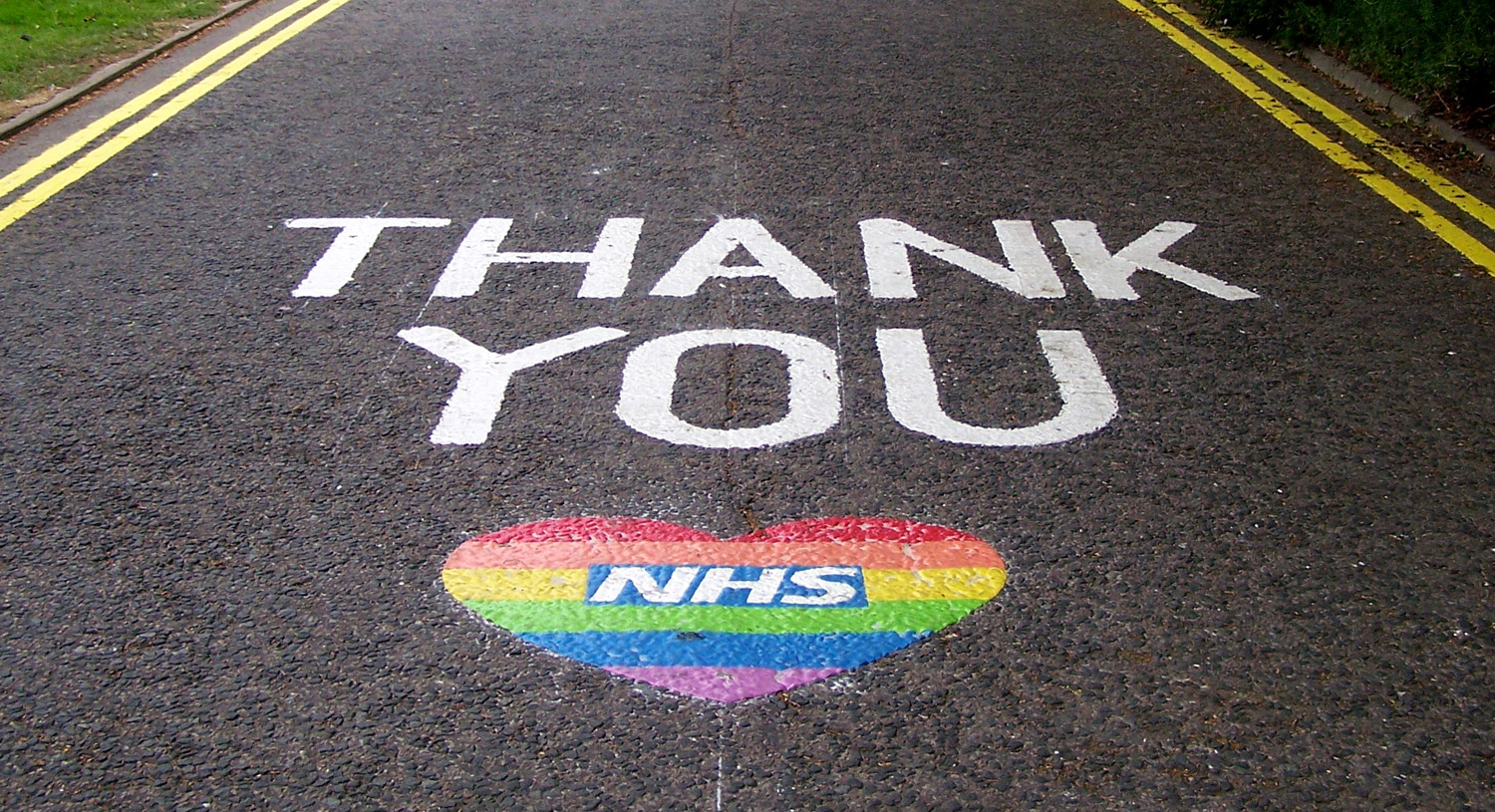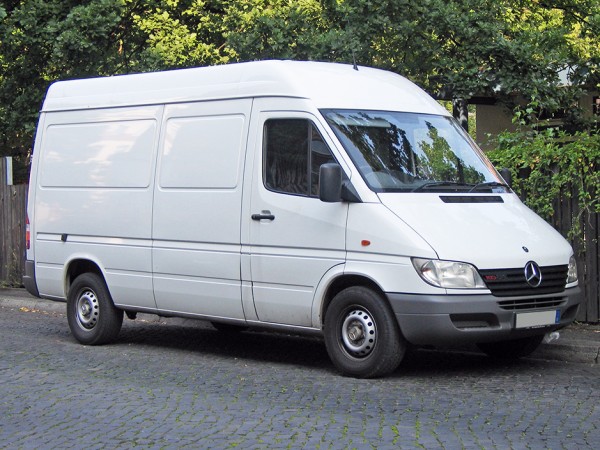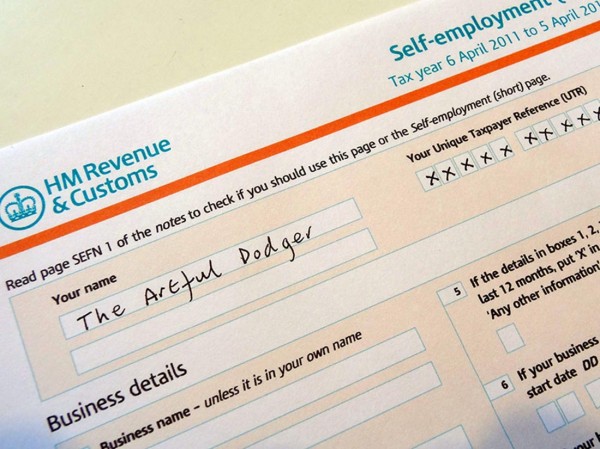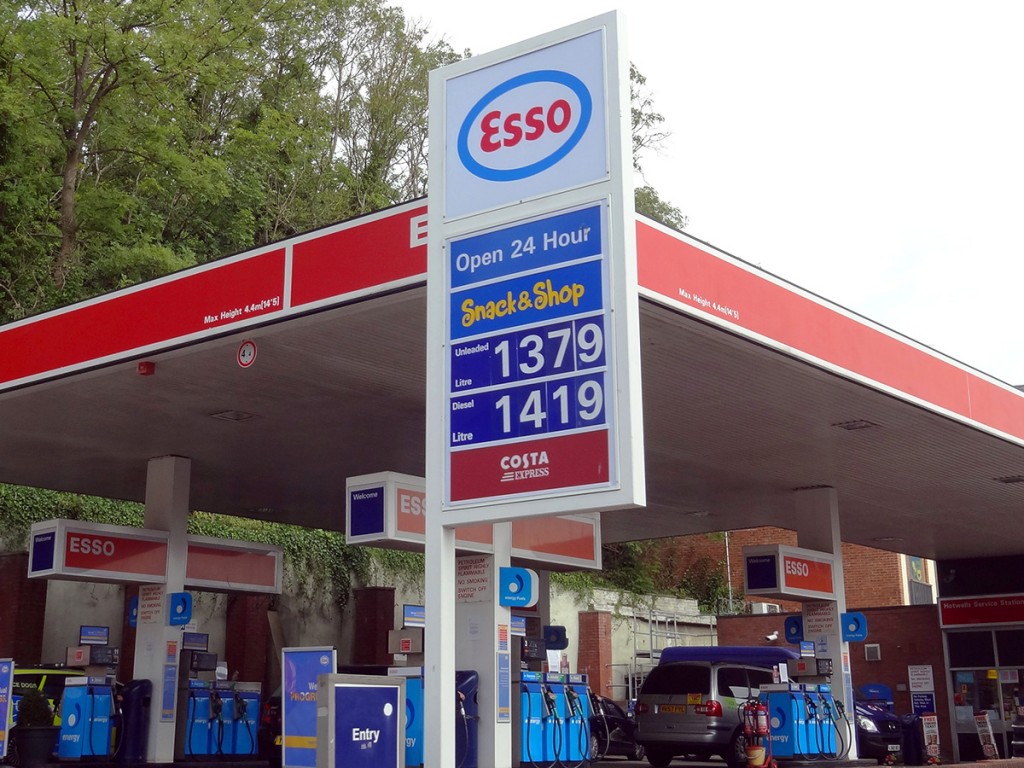 With waiting lists in the NHS at record highs and with the social care system in crisis, there have been growing calls for increased funding for both health and social care. The UK government has just announced tax rises to raise more revenue for both services and has specified new limits on the amounts people must pay towards their care.
With waiting lists in the NHS at record highs and with the social care system in crisis, there have been growing calls for increased funding for both health and social care. The UK government has just announced tax rises to raise more revenue for both services and has specified new limits on the amounts people must pay towards their care.
In this blog we look at the new tax rises and whether they are fair. We also look at whether the allocation of social care is fair. Clearly, the question of fairness is a contentious one, with people having very different views on what constitutes fairness between different groups in terms of incomes, assets and needs.
Funding
In terms of funding, the government has, in effect, introduced a new tax – the ‘health and social care levy’ to come into effect from April 2022. This will see a tax of 1.25% on the earned incomes of workers (both employees and the self-employed) and 1.25% on employers, making a total of 2.5% on employment income. It will initially be added to workers’ and employers’ national insurance (NI) payments. Currently national insurance is only paid by those below pension age (66). From 2023, the 1.25% levy will be separated from NI and will apply to pensioners’ earned income too.
The starting point for workers will be the same as for the rest of national insurance, currently £9568. Above this, the additional marginal rate of 1.25% will apply to all earned income. This will mean that a person earning £20 000 would pay a levy of £130.40, while someone earning £100 000 would pay £1130.40.
There will also be an additional 1.25% tax on share dividends. However, there will be no additional tax on rental income and capital gains, and on private or state pensions.
 It is estimated that the levy will raise around £14 billion per year (0.7% of GDP or 1.6% of total tax revenue), of which £11.2 billion will go to the Department of Health and Social Care in 2022/23 and £9 billion in 2023/24. This follows a rise in income tax of £8 billion and corporation tax of £17 billion announced in the March 2021 Budget. As a result, tax revenues from 2022/23 will be a higher proportion of GDP (just over 34%) than at any time over the past 70 years, except for a short period in 1969/70.
It is estimated that the levy will raise around £14 billion per year (0.7% of GDP or 1.6% of total tax revenue), of which £11.2 billion will go to the Department of Health and Social Care in 2022/23 and £9 billion in 2023/24. This follows a rise in income tax of £8 billion and corporation tax of £17 billion announced in the March 2021 Budget. As a result, tax revenues from 2022/23 will be a higher proportion of GDP (just over 34%) than at any time over the past 70 years, except for a short period in 1969/70.
Is the tax fair?
In a narrow sense, it can be argued that the levy is fair, as it is applied at the same percentage rate on all earned income. Thus, the higher a person’s earnings, the greater the amount they will pay. Also, it is mildly progressive. This is because, with a levy-free allowance of just under £10 000, the levy as a proportion of income earned rises gently as income rises: in other words, the average levy rate is higher on higher earners than on lower earners.
But national insurance as a whole is regressive as the rate currently drops from 12% to 2%, and with the levy will drop from 13.25% to 3.25%, once the upper threshold is reached. Currently the threshold is £50 270. As incomes rise above that level, so the proportion paid in national insurance falls. Politically, therefore, it makes sense to decouple the levy from NI, if it is being promoted as being fair as an additional tax on income earners.
Is it fair between the generations? Pensioners who earn income will pay the levy on that income at the same rate as everyone else (but no NI). But most pensioners’ main or sole source of income is their pensions and some, in addition, earn rent on property they own. Indeed, some pensioners have considerable private pensions or rental income. These sources of income will not be subject to the levy. Many younger people whose sole source of income is their wages will see this as unfair between the generations.
Allocation of funds
 For the next few years, most of the additional funding will go to the NHS to help reduced waiting lists, which rocketed with the diversion of resources to treating COVID patients. Of the additional £11.2 billion for health and social care in 2022/23, some £9.4 billion will go to the NHS; and of the £9 billion in 2023/24, some £7.2 billion will go to the NHS. This leaves only an additional £1.8 billion each year for social care.
For the next few years, most of the additional funding will go to the NHS to help reduced waiting lists, which rocketed with the diversion of resources to treating COVID patients. Of the additional £11.2 billion for health and social care in 2022/23, some £9.4 billion will go to the NHS; and of the £9 billion in 2023/24, some £7.2 billion will go to the NHS. This leaves only an additional £1.8 billion each year for social care.
The funding should certainly help reduce NHS waiting lists, but the government refused to say by how much. Also there is a major staff shortage in the NHS, with many employees having returned to the EU following Brexit and fewer new employees coming from the EU. It may be that the staff shortage will push up wages, which will absorb some of the increase in funding.
The additional money from the levy going to social care would be wholly insufficient on its own to tackle the crisis. As with the NHS, the social care sector is facing an acute staff shortage, again aggravated by Brexit. Wages are low, and when travel time between home visits is taken into account, many workers receive well below the minimum wage. Staff in care homes often find themselves voluntarily working extra hours for no additional pay so as to provide continuity of care. Often levels of care are well below what carers feel is necessary.
Paying for social care
 The government also announced new rules for the level of contributions by individuals towards their care costs. The measures in England are as follows. The other devolved nations have yet to announce their measures.
The government also announced new rules for the level of contributions by individuals towards their care costs. The measures in England are as follows. The other devolved nations have yet to announce their measures.
- Those with assets of less than £20 000 will not have to contribute towards their care costs from their assets, but may have to contribute from their income.
- Those with assets between £20 000 and £100 000 will get means-tested help towards their care costs.
- Those with assets over £100 000 will initially get no help towards their care costs. This is increasing from the current limit of £23 250
- There will be a limit of £86 000 to the amount people will have to contribute towards their care costs over their lifetime (from October 2023). These costs include both care in a care home and care at home.
- These amounts will apply only to care costs and not to the board and lodging costs in care homes. The government has not said how much people could be expected to contribute towards these living costs. A problem is that care homes generally do not itemise costs and hence it may be hard to distinguish care costs from living costs.
- Where people’s care costs are fully or partly covered, these will be paid by their local authority.
- A house will only count as a person’s asset if the person is going into a care home and it is not occupied by a spouse or partner. All financial assets, by contrast, will count.
- Many people in care homes will not be judged to be frail enough to be in receipt of support from their local authority. These people’s expenditure would not count towards the cap.
Setting the cap to the amount people must pay at the relatively high figure of £86 000 may ease the pressure on local authorities, as many people in care homes will die before the cap is reached. However, those who live longer and who get their care paid for above the cap, will pay no more no matter what their level of assets, even though they may be very rich. This could be seen to be unfair. A fairer system would be one where a proportion of a person’s assets had to be used to pay for care with no upper limit.
Also, the £1.8 billion is likely to fall well short of what local authorities will need to bring social care back to the levels considered acceptable, especially as the asset limit to support is being raised from £23 250 to £100 000. Local authority expenditure on social care fell by 7.5% per person in real terms between 2009/10 and 2019/20. This means that local authorities may have to increase council tax to top up the amount provided by the government from the levy.
Articles
- An initial response to the Prime Minister’s announcement on health, social care and National Insurance
Institute for Fiscal Studies Press Release, Paul Johnson, Carl Emmerson, Helen Miller, David Phillips, George Stoye, Isaac Delestre, Isabel Stockton, Kate Ogden, Robert Joyce, Stuart Adam, Tom Waters, Max Warner and Ben Zaranko (7/9/21)
- National Insurance rates to rise to fund social care crisis – how much more will you pay?
Which? News, Danielle Richardson (7/9/21)
- Social care tax rise: Boris Johnson wins Commons vote
BBC News (8/9/21)
- Will the cap really fix the social care system?
BBC News, Nick Triggle (8/9/21)
- National Insurance contributions to rise by 1.25% from April 2022 to fund social care costs
Money Saving Expert, James Flanders (7/9/21)
- Boris Johnson plan to fund health and social care lifts UK tax burden to 70-year high
Financial Times, George Parker, Laura Hughes and Chris Giles (7/9/21)
- Boris Johnson has created a ‘social care plan’ without any plan for social care
The Guardian, Frances Ryan (7/9/21)
- Analysis: The Government’s plans for health and social care
Reform, William Mills (8/9/21)
- Analysis: What does Boris Johnson’s health and social care tax mean for Scotland?
The Scotsman, Martyn McLaughlin (7/9/21)
- Social care tax rise is austerity by another name – economist Q&A
The Conversation, Alex de Ruyter (8/9/21)
- National insurance: a UK tax which is complex and vulnerable to political intervention
The Conversation, Gavin Midgley (8/9/21)
Video
Government document
Data
Questions
- How would you define a ‘fair’ way of funding social care?
- Distinguish between a proportional, progressive and regressive tax. How would you categorise (a) the new health and social care levy; (b) national insurance; (c) income tax; (d) VAT?
- Argue the case for providing social care free at the point of use to all those who require it.
- Argue the case for charging a person for some or all of their social care, with the amount charged being based on (a) the person’s income; (b) the person’s wealth; (c) both income and wealth.
- Argue the case for and against capping the amount a person should pay towards their social care.
- When a tax is used to raise revenue for a specific purpose it is known as a ‘hypothecated tax’. What are the advantages and disadvantages of using a hypothecated tax for funding health and social care?
Do you want to get drunk this festive season in the most tax efficient way: i.e. minimise the amount of tax you pay for the volume of alcohol that you drink? Do tax rates vary or are all alcoholic drinks taxed in the same or similar way?
 The UK government imposes two different types of tax on alcohol. One is a specific or fixed tax per unit, referred to as excise duty or excise tax. This varies depending on the type of alcohol and is the focus of this blog. The other is VAT, which is 20% of the price for all alcoholic drinks. The price on which VAT is based includes the impact of the excise tax.
The UK government imposes two different types of tax on alcohol. One is a specific or fixed tax per unit, referred to as excise duty or excise tax. This varies depending on the type of alcohol and is the focus of this blog. The other is VAT, which is 20% of the price for all alcoholic drinks. The price on which VAT is based includes the impact of the excise tax.
How does the implementation of excise tax differ between alcoholic drinks? Both the tax rate itself and the unit of output on which it is based vary: i.e. the volume of liquid vs the volume of pure alcohol within the liquid.
For example, with lager, beer and spirits the excise tax depends on the units of alcohol in the drink rather than the number of litres. The tax works in the following way. It is based on the alcohol by volume or ABV of the lager, beer or spirit. This is often displayed on the bottle or can. ABV is the percentage of the drink that is pure alcohol. Therefore, if a one-litre bottle of lager has an ABV of 1%, then 10ml of the bottle contains pure alcohol. Ten millilitres of pure alcohol is one unit of alcohol. If a one litre bottle of lager had an ABV of 5% it contains 5 units of alcohol.
Excise duties on spirits are the simplest of all the alcohol taxes. The rate for 2017/18 is 28.74p for each percentage of ABV or unit of alcohol in a one-litre bottle. Most spirits have an ABV of 40%. This means that there are 40 units of alcohol in a litre bottle and the excise tax payable on that bottle is £11.50 (40 × 28.74p). If a litre bottle had an ABV of 57%, such as Woods Navy Rum, then the excise tax would be or £16.38 (57 × 28.74p). Although the volume of liquid is the same in each case, the excise tax has increased by £4.88 because the alcohol content has increased.
For cider and wine the system is quite different. Within certain bands of alcoholic strength, the excise duty is based on the volume of the drink rather than by its ABV. For example, the excise tax on a litre of cider with an ABV of between 1.2% and 7.5% is 40.38p. This has the effect of reducing the tax rate per unit of alcohol as the alcoholic content of the cider increases (up to a limit of 7.5%). For example, the rate of excise tax per unit of alcohol for a litre bottle of cider with an ABV of 2% is 20.19p (40.38/2) whereas for a litre bottle of cider with an ABV of 7.5% it is just 5.39p (40.38/7.5). Wine is taxed in a similar way. A litre of wine with an ABV of between 5.5% and 15% is taxed at 288.65p per litre.
The excise tax rates per unit of alcohol for different drinks are illustrated below.
|
Drink
|
ABV
|
Excise tax per
unit of alcohol
|
| Beer/lager |
5%
|
19.08p
|
| Beer/lager |
8%
|
24.77p
|
| Spirits |
1-100%
|
28.74p
|
| Wine |
12.5%
|
21.90p
|
| Wine |
15%
|
19.24p
|
| Cider |
5%
|
8.08p
|
| Cider |
7.5%
|
5.39p
|
The table clearly shows that cider with an ABV of 7.5 per cent is by far the most tax effective way of consuming alcohol.
Although this blog is a rather light-hearted look at excise tax, it does help to illustrate the strange anomalies of the system used in the UK. Research by the Institute for Fiscal Studies (IFS) has indicated that heavier drinkers are more likely to switch between different alcoholic products in response to price changes. They also tend to drink products with more units of alcohol in them: i.e. spirits such as whisky and gin. For these reasons, the IFS has suggested that the excise tax rates on cider and spirits should be increased.
In the November budget, the Chancellor announced plans to introduce a new excise tax rate on still cider with an ABV of between 6.9% and 7.5%.
The excise taxes on cider and wine are based on the volume of liquid because of the European Community Directive 92/84/EEC. It will be interesting to see if the government changes this system to one based on alcohol content once the UK had left the European Union.
Articles
Budget 2017 – Why is white cider being taxed more? BBC News (22/11/17)
Is it time for a flat tax on alcohol – health campaigners can drink to that The Telegraph, Christopher Snowdon (15/2/17)
Traditional cider makers say tax on strong brands will hurt their business The Guardian, Rob Davies (22/11/17)
Minimum price would increase cost of 70% of alcohol BBC News (15/12/17)
 Designing alcohol taxes IFS, Kate Smith (24/4/17) .
Designing alcohol taxes IFS, Kate Smith (24/4/17) .
Questions
- Explain the difference between an ad valorem tax and a specific tax.
- Illustrate the impact of an ad valorem tax and a specific tax on a demand and supply diagram.
- What is the excise tax rate per unit of alcohol on a litre bottle of cider with an ABV of 6%?
- What is the economic rationale for imposing excise tax on alcohol?
- How will the external costs of consuming alcohol differ from those of smoking cigarettes? Draw a marginal external cost of consumption curve for both products to illustrate the difference.
- Compare the impact of increasing excise tax rates on cider and spirits with introducing a minimum unit price for alcohol.
- In April 2012 the government in England and Wales imposed a ban on ‘below cost’ pricing of alcohol. Explain how this policy works and what impact you think it has had.
 The UK Chancellor of the Exchequer, Philip Hammond, announced in the Budget this week that national insurance contributions (NICs) for self-employed people will rise from 9% to 11% by 2019. These are known as ‘Class 4’ NICs. The average self-employed person will pay around £240 more per year, but those on incomes over £45,000 will pay £777 more per year. Many of the people affected will be those working in the so-called ‘gig economy’. This sector has been growing rapidly in recent years and now has over 4 million people working in it.
The UK Chancellor of the Exchequer, Philip Hammond, announced in the Budget this week that national insurance contributions (NICs) for self-employed people will rise from 9% to 11% by 2019. These are known as ‘Class 4’ NICs. The average self-employed person will pay around £240 more per year, but those on incomes over £45,000 will pay £777 more per year. Many of the people affected will be those working in the so-called ‘gig economy’. This sector has been growing rapidly in recent years and now has over 4 million people working in it.
Workers in the gig economy are self employed, but are often contracted to an employer. They are paid by the job (or ‘gig’: like musicians), rather than being paid a wage. Much of the work is temporary, although many in the gig economy, such as taxi drivers and delivery people stick with the same job. The gig economy is just one manifestation of the growing flexibility of labour markets, which have also seen a rise in temporary employment, part-time employment and zero-hour contracts.
 Working in the gig economy provides a number of benefits for workers. Workers have greater flexibility in their choice of hours and many work wholly or partly from home. Many do several ‘gigs’ simultaneously, which gives variety and interest.
Working in the gig economy provides a number of benefits for workers. Workers have greater flexibility in their choice of hours and many work wholly or partly from home. Many do several ‘gigs’ simultaneously, which gives variety and interest.
In terms of economic theory, this flexibility gives workers a greater opportunity to work the optimal amount of time. This optimum involves working up to the point where the marginal benefit from work, in terms of pay and enjoyment, equals the marginal cost, in terms of effort and sacrificed leisure.
For firms using people from the gig economy, it has a number of advantages. They are generally cheaper to employ, as they do not need to be paid sick pay, holiday pay or redundancy; they are not entitled to parental leave; there are no employers’ national insurance contributions to pay (which are at a rate of 13.8% for employers); the minimum wage does not apply to such workers as they are not paid a ‘wage’. Also the firm using such workers has greater flexibility in determining how much work individuals should do: it chooses the amount of service it buys in a similar way that consumers decide how much to buy.
 Many of these advantages to firms are disadvantages to the workers in the gig economy. Many have little bargaining power, whereas many firms using their services do. It is not surprising then that the Chancellor’s announcement of a 2 percentage point rise in NICs for such people has met with such dismay by the people affected. They will still pay less than employed people, but they claim that this is now not enough to compensate for the lack of benefits they receive from the state or from the firms paying for their services.
Many of these advantages to firms are disadvantages to the workers in the gig economy. Many have little bargaining power, whereas many firms using their services do. It is not surprising then that the Chancellor’s announcement of a 2 percentage point rise in NICs for such people has met with such dismay by the people affected. They will still pay less than employed people, but they claim that this is now not enough to compensate for the lack of benefits they receive from the state or from the firms paying for their services.
Some of the workers in the gig economy can be seen as budding entrepreneurs. If you have a specialist skill, you may use working in the gig economy as the route to setting up your own business and employing other people. A self-employed plumber may set up a plumbing company; a management consultant may set up a management consultancy agency. Another criticism of the rise in Class 4 NICs is that this will discourage such budding entrepreneurs and have longer-term adverse supply-side effects on the economy.
 As far as the government is concerned, there is a worry about people moving from employment to self-employment as it tends to reduce tax revenues. Not only will considerably less NIC be paid by previous employers, but the scope for tax evasion is greater in self-employment. There is thus a trade-off between the extra output and small-scale investment that self-employment might bring and the lower NIC/tax revenue for the government.
As far as the government is concerned, there is a worry about people moving from employment to self-employment as it tends to reduce tax revenues. Not only will considerably less NIC be paid by previous employers, but the scope for tax evasion is greater in self-employment. There is thus a trade-off between the extra output and small-scale investment that self-employment might bring and the lower NIC/tax revenue for the government.
Articles
Thriving in the gig economy Philippine Daily Inquirer, Michael Baylosis (10/3/17)
6 charts that show how the ‘gig economy’ has changed Britain – and why it’s not a good thing Business Insider, Ben Moshinsky (21/2/17)
What is the ‘gig’ economy? BBC News, Bill Wilson (10/2/17)
Great Freelance, Contract and Part-Time Jobs for 2017 CareerCast (10/3/17)
We have the laws for a fairer gig economy, we just need to enforce them The Guardian, Stefan Stern (7/2/17)
The gig economy will finally have to give workers the rights they deserve Independent, Ben Chu (12/2/17)
Gig economy chiefs defend business model BBC News (22/2/17)
Spring Budget 2017 tax rise: What’s the fuss about? BBC News, Kevin Peachey (9/3/17)
Self-employed hit by national insurance hike in budget The Guardian, Simon Goodley and Heather Stewart (8/3/17)
What national insurance is – and where it goes The Conversation, Jonquil Lowe (10/3/17)
Britain’s tax raid on gig economy misses the mark Reuters, Carol Ryan (9/3/17)
Economics collides with politics in Philip Hammond’s budget The Economist (9/3/17)
UK government publications
Contract types and employer responsibilities – 5. Freelancers, consultants and contractors GOV.UK
Spring Budget 2017 GOV.UK (8/3/17)
Spring Budget 2017: documents HM Treasury (8/3/17)
National Insurance contributions (NICs) HMRC and HM Treasury (8/3/17)
Questions
- Give some examples of work which is generally or frequently done in the gig economy.
- What are the advantages and disadvantages to individuals from working in the gig economy?
- What are the advantages and disadvantages to firms from using the services of people in the gig economy rather than employing people?
- In the case of employed people, both the employees and the employers have to pay NICs. Would it be fair for both such elements to be paid by self-employed people on their own income?
- Discuss ways in which the government might tax the firms which buy the services of people in the gig economy.
- How does the rise of the gig economy affect the interpretation of unemployment statistics?
- What factors could cause a substantial growth in the gig economy over the coming years?
 In the blog No accounting for trade, the rise in the UK’s balance of trade deficit was discussed. Many factors have contributed to this weakening position and no one market is to blame. But, by analysing one product and thinking about the factors that have caused its export volumes to decline, we can begin to create a picture not just of the UK economy (or more particularly Scotland!), but of the wider global economy.
In the blog No accounting for trade, the rise in the UK’s balance of trade deficit was discussed. Many factors have contributed to this weakening position and no one market is to blame. But, by analysing one product and thinking about the factors that have caused its export volumes to decline, we can begin to create a picture not just of the UK economy (or more particularly Scotland!), but of the wider global economy.
Scotch whisky may not have been the drink of choice for many British adults, but look outside Great Britain and the volume consumed is quite staggering. For example, French consumers drink more Scotch whisky in one month than they drink cognac in one year. The volume of Scotch whisky exported from our shores was £4.23 billion for 2011, accounting for 90% of all sales and making its way into 200 markets. However, one problem with this product is that it is highly susceptible to the business cycle. Add to this the time required to produce the perfect Scotch (in particular the fact that it must be left to mature) and we have a market where forecasting is a nightmare.
Producers typically look to forecast demand some 10 years ahead and so getting it right is not always easy, especially when the global economy declines following a financial crisis! So what has been the impact on exports of this luxurious drink? In the past few years, it has been as key growth market for UK exports rising by 190% in value over the past decade. But in 2012 the volume of Scotch whisky exports fell by 5% to 1.19 billion bottles. What explains the decline in sales?
The biggest importer of Scotch whisky is France and its volumes were down by 25%. Part of this decline is undoubtedly the economic situation. When incomes decline, demand for normal goods also falls. Many would suggest Scotch whisky is a luxury and thus we would expect to see a relatively large decline following any given fall in income. However, another factor adding to this decline in 2012 is the increased whisky tax imposed by the French government. Rising by 15% in 2012, commentators suggest that this caused imports of Scotch whisky to rise in 2011 to avoid this tax, thus imports in 2012 took a dive. Spain is another key export market and its economic troubles are clearly a crucial factor in explaining their 20% drop in volume of Scotch whisky imported.
But, it’s not all bad news: sales to Western Europe may be down, but Eastern Europe and other growth countries/continents, such as the BRICs and Africa have developed a taste for this iconic product. Latvia and Estonia’s value of Scotch whisky imports were up by 48% and 28% respectively, as Russian demand rises and China, still growing, is another key market. Gavin Hewitt, chief executive of the Scotch Whisky Association said:
A combination of successful trade negotations, excellent marketing by producers, growing demand from mature markets, particularly the USA, and the growing middle class in emerging economies helped exports hit a record £4.3bn last year.
Furthermore, while the volume of exports worldwide did fall, the value of these exports rose to £4.27 billion, a growth of 1%. This suggests that although we are exporting fewer bottles, the bottles that we are exporting are more expensive ones. Clearly some people have not felt the impact of the recession. For Scotland and the wider UK, these declining figures are concerning, but given the cyclical nature of the demand, as the world economy slowly begins to recover, sales are likely to follow suit. Gavin Hewitt continued his comments above, saying:
We are contributing massively to the Government’s wish for an export-led recovery. There is confidence in the future of the industry, illustrated by the £2bn capital investment that Scotch whisky producers have committed over the next three to four years.
The following articles consider the rise and fall of this drink and its role as a key export market across the world.
 Scottish whisky industry puts export hope in new market BBC News (2/4/13)
Scottish whisky industry puts export hope in new market BBC News (2/4/13)
Scotch whisky sales on the slide The Guardian, Simon Neville (2/4/13)
Growth stalls for Scotch whisky exports BBC News (2/4/13)
Scotch whisky accounts for 25pc of UK’s food and drink exports The Telegraph, Auslan Cramb (2/4/13)
Whisky sales fall but value of exports hits new high Herald Scotland (3/4/13)
Scotch whisky exports rise to record value The Telegraph, Auslan Cramb (2/4/13)
Scotch whisky exports hit by falling demand in France The Grocer, Vince Bamford (2/4/13)
New markets save Scotch from impact of austerity Independent, Tom Bawden (2/4/13)
Scotch exports hit by falling demand Financial Times, Hannah Kichler (2/4/13)
Questions
- Which is the better measure of an industry’s performance: the value or the volume of goods sold?
- Why would you expect volumes of Scotch sold to decline during an economic downturn?
- When a higher tax was imposed on Scotch whisky in France, why did volumes fall? Use a demand and supply diagram to illustrate the impact of the tax.
- What type of figure would you expect Scotch whisky to have for income elasticity of demand? Does it vary for different people?
- Why is forecasting demand for Scotch so difficult? What techniques might be used?
- Why does demand for Scotch whisky remain high and even rising in many emerging markets?
- Is the market for Scotch whisky exports a good indication of the interdependence of countries across the world?
 Increases in the cost of living over the past few years have put many families under financial pressure. One of the main factors that has been hurting households is the price of petrol and diesel. Road fuel duty was due to be increased last August, but the Chancellor delayed it in June. However, a planned 3p rise in duty by the Coalition, which has faced rebellion from numerous MPs may now be delayed further, following a hint from the Treasury.
Increases in the cost of living over the past few years have put many families under financial pressure. One of the main factors that has been hurting households is the price of petrol and diesel. Road fuel duty was due to be increased last August, but the Chancellor delayed it in June. However, a planned 3p rise in duty by the Coalition, which has faced rebellion from numerous MPs may now be delayed further, following a hint from the Treasury.
The government has said that it will do everything it can to support struggling families with the cost of living and this has led many to conclude that in the Autumn Statement, the Chancellor will delay the planned 3p rise. Labour was defeated in its efforts to force a delay of the proposed 3p duty rise, as Tory bankbenchers were given this hint that the Treasury would decide to delay the increase anyway. The Economic Secretary to the Treasury said that fuel duty is part of the government’s strategy to help cut the cost of living. He commented that fuel duty was 20% lower in real terms compared to March 2000, when it was at its peak.
If we had continued with the policies of the previous government, quite simply prices would be higher, fuel would be 10p more expensive per litre. I know some will call for a further freeze in fuel duty today. I can assure them this government understands the financial pressures hard-working families are facing. Subject to the constraints of the public finances, this government is determined to help families with the cost of living.

A key economic question to consider is why is fuel one of the products that is frequently taxed? When a tax is imposed on a product, its price will rise and as the law of demand tells us, this will cause people to purchase less of it. But, what is so special about petrol? Why do people continue to purchase petrol even when its price rises? The following articles consider the concerns surrounding the 3p fuel duty rise.
Treasury to defer planned increase in fuel duty The Guardian, Nicholas Watt (13/11/12)
Asda chief Andy Clarke urges scrapping fuel duty rise BBC News (15/11/12)
Fuel Duty: Labour to force vote to delay 3p rise The Guardian, Helene Mulholland (12/11/12)
Fuel duty delay called for by Which? BBC News (11/11/12)
Fuel Duty: Government may still axe increase Sky News (13/11/12)
Chancellor heads off fuel duty rebellion Financial Times, George Parker (12/11/12)
Osborne pressed to shelve fuel duty rise Financial Times, George Parker (8/11/12)
Planned 3p petrol increase could be abandonedThe Telegraph, Christopher Hope (11/11/12)
Questions
- Why is petrol a good that is taxed so heavily?
- Illustrate the impact of a tax on petrol using a demand and supply diagram. Explain what happens to the equilibrium price and quantity.
- Which factors will make the change in price and quantity relatively larger or smaller? Think about how elasticity is relevant here.
- What other factors have contributed towards the increased cost of living over the past few years?
- Which factors in particular would make a January rise in fuel duty especially painful for many families?
- What are the arguments both for and against delaying the 3p rise in duty?
- According to the Economic Secretary to the Treasury, fuel duty is 20% lower in real terms. What does this actually mean?
 With waiting lists in the NHS at record highs and with the social care system in crisis, there have been growing calls for increased funding for both health and social care. The UK government has just announced tax rises to raise more revenue for both services and has specified new limits on the amounts people must pay towards their care.
With waiting lists in the NHS at record highs and with the social care system in crisis, there have been growing calls for increased funding for both health and social care. The UK government has just announced tax rises to raise more revenue for both services and has specified new limits on the amounts people must pay towards their care. It is estimated that the levy will raise around £14 billion per year (0.7% of GDP or 1.6% of total tax revenue), of which £11.2 billion will go to the Department of Health and Social Care in 2022/23 and £9 billion in 2023/24. This follows a rise in income tax of £8 billion and corporation tax of £17 billion announced in the March 2021 Budget. As a result, tax revenues from 2022/23 will be a higher proportion of GDP (just over 34%) than at any time over the past 70 years, except for a short period in 1969/70.
It is estimated that the levy will raise around £14 billion per year (0.7% of GDP or 1.6% of total tax revenue), of which £11.2 billion will go to the Department of Health and Social Care in 2022/23 and £9 billion in 2023/24. This follows a rise in income tax of £8 billion and corporation tax of £17 billion announced in the March 2021 Budget. As a result, tax revenues from 2022/23 will be a higher proportion of GDP (just over 34%) than at any time over the past 70 years, except for a short period in 1969/70. For the next few years, most of the additional funding will go to the NHS to help reduced waiting lists, which rocketed with the diversion of resources to treating COVID patients. Of the additional £11.2 billion for health and social care in 2022/23, some £9.4 billion will go to the NHS; and of the £9 billion in 2023/24, some £7.2 billion will go to the NHS. This leaves only an additional £1.8 billion each year for social care.
For the next few years, most of the additional funding will go to the NHS to help reduced waiting lists, which rocketed with the diversion of resources to treating COVID patients. Of the additional £11.2 billion for health and social care in 2022/23, some £9.4 billion will go to the NHS; and of the £9 billion in 2023/24, some £7.2 billion will go to the NHS. This leaves only an additional £1.8 billion each year for social care. The government also announced new rules for the level of contributions by individuals towards their care costs. The measures in England are as follows. The other devolved nations have yet to announce their measures.
The government also announced new rules for the level of contributions by individuals towards their care costs. The measures in England are as follows. The other devolved nations have yet to announce their measures. Johnson admits breaking manifesto promise on tax rises for health and social care
Johnson admits breaking manifesto promise on tax rises for health and social care






